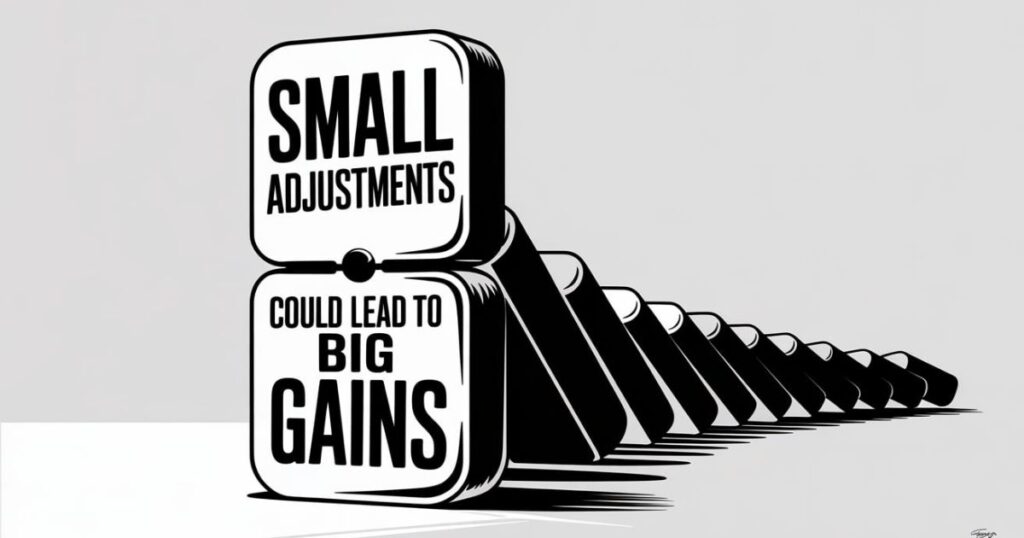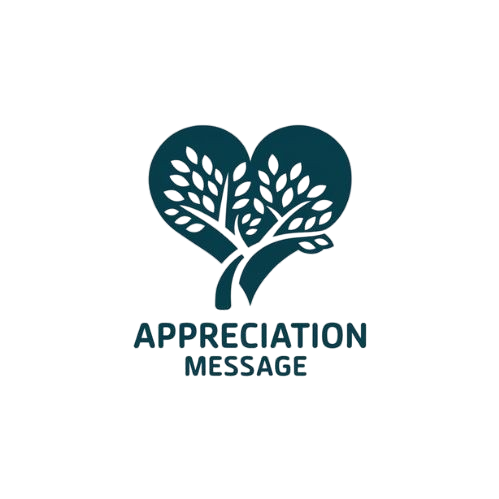Room for Improvement isn’t just a phrase; it’s a mindset. It’s about spotting areas where we can do better and always striving for growth. When we talk about room for improvement, we’re not just pointing out flaws, we’re discovering opportunities to refine and develop. It’s a much more positive way to say “this needs work.” Instead of focusing on weaknesses, we highlight areas for growth or room for growth examples. These terms shine a light on the potential for progress. You can also say “areas for enhancement” or “opportunities for refinement.” These alternatives keep the conversation forward-thinking and optimistic. Room for improvement is a reminder that no matter where we are, there’s always more to learn and room to evolve. It’s a powerful way to foster a growth-oriented mindset, both personally and professionally.
What Does “Room for Improvement” Mean?
Room for Improvement refers to areas where progress can be made. It means recognizing that something can be enhanced or developed further, whether it’s a skill, task, or process. Instead of focusing on flaws, this phrase highlights potential for growth. It encourages a mindset that is open to learning and refining, leading to continuous improvement. Seeing room for improvement in any situation pushes individuals to do better and achieve more.
The benefits of having room for improvement are clear. It motivates personal and professional growth by focusing on opportunities rather than limitations. When we acknowledge room for improvement, we become more self-aware and open to feedback. It fosters a positive attitude towards challenges and helps individuals work toward their goals. Embracing room for improvement leads to better results, stronger skills, and more fulfilling achievements. Ultimately, it creates a growth-oriented mindset that drives success and satisfaction.
Is It Professional/Polite to Say “Room for Improvement”?

Saying “Room for Improvement” is both professional and polite when used correctly. It focuses on growth and development rather than pointing out flaws or mistakes. When you phrase feedback this way, it encourages a positive conversation and shows that you’re offering suggestions for progress. Instead of sounding critical, it sounds supportive and forward-thinking. Using this phrase in professional settings helps maintain a respectful tone, making it easier to address areas where change is needed.
However, it’s important to use room for improvement in the right context. When giving feedback, ensure you highlight specific areas where development is possible. By using it constructively, you can motivate individuals to improve without discouraging them. Instead of saying something is “wrong,” you’re providing room for improvement and a path forward. This keeps the atmosphere professional and focused on positive outcomes, benefiting both personal and team growth.
Advantage
- Encourages a positive, growth-focused mindset.
- Avoids sounding overly critical or negative.
- Promotes constructive feedback and learning opportunities.
- Helps individuals focus on areas to enhance rather than mistakes.
- Supports long-term personal and professional development.
Disadvantage
- Can be vague if not paired with specific examples.
- May sound overly diplomatic and avoid direct feedback.
- Could be misinterpreted as avoiding giving full criticism.
- Might not have the same impact in high-pressure situations.
- Some may see it as too soft or lacking urgency in certain contexts.
Read Also: 40 Other Ways to Say Thanks for Having Me (With Examples)
“Room for Improvement” Synonyms:

- Areas for growth
- Opportunities for refinement
- Areas for enhancement
- Potential for development
- Areas for betterment
- Opportunities for progress
- Need for fine-tuning
- Scope for improvement
- Areas to develop
- Room for growth
- Areas for advancement
- Space for progress
- Opportunities to improve
- Points for improvement
- Areas for adjustment
- Areas of opportunity
- Room to evolve
- Opportunities for change
- Aspects to refine
- Areas for fine-tuning
- Areas for upgrading
- Room for advancement
- Opportunities for enhancement
- Space to grow
- Areas for strengthening
- Opportunities for skill-building
- Areas of potential
- Areas to optimize
- Opportunities for development
- Areas to improve
- Space for fine-tuning
- Aspects for progress
- Room for adjustment
- Opportunities for betterment
- Areas to enhance
- Opportunities for change
- Points for growth
- Areas to refine
- Chances for improvement
- Potential for upgrading
1. “Opportunities for Growth”
Meaning: Areas where development can happen.
Definition: This phrase emphasizes the potential for improvement in a positive light.
Explanation: Instead of focusing on what’s wrong, it highlights the opportunity to grow.
Scenario Example:
Manager: “Your report is good, but there are a few opportunities for growth in the data analysis section.”
Response: “I appreciate the feedback and will work on those areas.”
Best Use: When you want to highlight the potential for improvement.
Tone: Positive, forward-thinking.
2. “Areas to Enhance”
Meaning: Specific areas where refinement can take place.
Definition: Focuses on specific parts of a task or project that can be improved.
Explanation: It suggests that further refinement is needed to reach a higher level of quality.
Scenario Example:
Manager: “There are a few areas to enhance in your presentation design.”
Response: “I’ll make those adjustments to improve the overall impact.”
Best Use: When highlighting specific parts that need enhancement.
Tone: Constructive, encouraging.
3. “Points to Improve Upon”
Meaning: Aspects that can be worked on or improved.
Definition: Identifies areas where there’s a chance for progress or betterment.
Explanation: This phrase directs attention to specific areas where improvement is possible.
Scenario Example:
Manager: “I believe there are a few points to improve upon in your report’s structure.”
Response: “Thanks for pointing that out. I’ll make the changes.”
Best Use: When giving feedback on specific aspects of work that need improvement.
Tone: Neutral, helpful.
4. “Potential for Refinement”
Meaning: Opportunities to make adjustments for better results.
Definition: Highlights areas that can be polished for a more refined outcome.
Explanation: It suggests that there’s an opportunity to improve something further.
Scenario Example:
Manager: “Your presentation is almost there, but there’s potential for refinement in your visuals.”
Response: “I’ll refine those details to make them clearer.”
Best Use: When indicating the possibility of improving something to perfection.
Tone: Encouraging, professional.
5. “Areas That Can Be Strengthened”
Meaning: Aspects of a project that can become more effective or robust.
Definition: Focuses on parts that need to be reinforced or improved.
Explanation: Emphasizes areas that require more attention to achieve better results.
Scenario Example:
Manager: “There are areas that can be strengthened in your communication with clients.”
Response: “I’ll work on improving my client interactions moving forward.”
Best Use: When pointing out specific aspects that need to be made stronger.
Tone: Supportive, constructive.
6. “Room for Further Development”
Meaning: Space for additional growth or progress.
Definition: Suggests there’s still opportunity for improvement and growth.
Explanation: Encourages the idea that there’s always more room to develop.
Scenario Example:
Manager: “Your work is great, but there’s room for further development in your project management skills.”
Response: “Thank you! I will focus on improving that area.”
Best Use: When referring to long-term improvement and growth.
Tone: Motivating, growth-oriented.
7. “Potential to Further Refine”
Meaning: Opportunity to make something more polished or precise.
Definition: Implies that there’s room to perfect an aspect of work.
Explanation: Focuses on enhancing an existing idea or project to make it better.
Scenario Example:
Manager: “Your design is good, but there’s potential to further refine the layout for clarity.”
Response: “I’ll make those refinements for better clarity.”
Best Use: When suggesting that something can be made more polished.
Tone: Encouraging, improvement-focused.
8. “Opportunities to Build Upon”
Meaning: Areas where progress can be made based on what’s already been done.
Definition: Encourages taking something already good and building it up further.
Explanation: This phrase directs focus on strengthening and expanding what’s working.
Scenario Example:
Manager: “You’ve done well here, now there are opportunities to build upon these strengths.”
Response: “I’ll work on developing those strengths further.”
Best Use: When suggesting to take existing work and improve on it.
Tone: Motivating, supportive.
9. “Aspects to Fine-Tune”
Meaning: Specific parts of a project that need slight adjustments.
Definition: Focuses on making small, yet impactful changes to improve quality.
Explanation: This phrase is about perfecting details rather than making major changes.
Scenario Example:
Manager: “The presentation looks good, but there are aspects to fine-tune, like the slide transitions.”
Response: “I’ll make those adjustments for smoother transitions.”
Best Use: When focusing on small, detailed improvements.
Tone: Constructive, professional.
10. “There’s Potential for More Impact”
Meaning: Opportunity to increase effectiveness or influence.
Definition: Suggests there’s an opportunity to create a stronger or more meaningful effect.
Explanation: Encourages making something more impactful for better results.
Scenario Example:
Manager: “Your work is good, but there’s potential for more impact in the client presentation.”
Response: “I’ll focus on enhancing the impact for the next one.”
Best Use: When aiming to create a more significant impact.
Tone: Encouraging, solution-oriented.
11. “Could Benefit from Improvement”
Meaning: Areas where growth can take place for better results.
Definition: Suggests that certain aspects could be enhanced for improvement.
Explanation: Highlights that with some effort, improvement can be made.
Scenario Example:
Manager: “This report is good, but it could benefit from improvement in time management.”
Response: “I’ll work on optimizing the process for future reports.”
Best Use: When suggesting that there’s room for betterment in specific areas.
Tone: Constructive, polite.
12. “Needs Some Fine-Tuning”
Meaning: Requires minor adjustments for better outcomes.
Definition: Focuses on small improvements to achieve perfection.
Explanation: It’s about tweaking things just a little bit for a better result.
Scenario Example:
Manager: “Your presentation is solid, but it needs some fine-tuning, especially the visuals.”
Response: “I’ll adjust those details to make them clearer and more engaging.”
Best Use: When pointing out areas that need slight adjustments.
Tone: Encouraging, supportive.
13. “Areas for Adjustment”
Meaning: Specific sections or elements that require modification.
Definition: Indicates that certain aspects need to be changed or adjusted.
Explanation: Points to areas that are not quite right and need tweaking.
Scenario Example:
Manager: “There are areas for adjustment in your report’s structure.”
Response: “I’ll reorganize the content to make it clearer and more concise.”
Best Use: When suggesting that improvements are needed in specific areas.
Tone: Constructive, improvement-focused.
14. “Room to Strengthen”
Meaning: Opportunities to make something more powerful or effective.
Definition: Focuses on making an aspect more robust or impactful.
Explanation: Suggests that there’s still an opportunity to reinforce or enhance.
Scenario Example:
Manager: “There’s room to strengthen the team’s communication for better collaboration.”
Response: “I’ll work on improving communication with the team moving forward.”
Best Use: When highlighting opportunities to make things stronger.
Tone: Motivating, action-oriented.
15. “More Work to Be Done”
Meaning: Recognizes that there’s still more effort required.
Definition: Implies that some tasks or areas need additional attention and effort.
Explanation: Acknowledges that work is in progress and more is needed.
Scenario Example:
Manager: “Your project is on the right track, but there’s more work to be done in the analysis section.”
Response: “I’ll dedicate more time to refining the analysis.”
Best Use: When recognizing that a task is incomplete and still needs attention.
Tone: Encouraging, solution-focused.
16. “Potential for Improvement”
Meaning: Possibility for growth or enhancement.
Definition: Indicates that there is room for betterment in a specific area.
Explanation: This phrase emphasizes the opportunity to grow and improve.
Scenario Example:
Manager: “There’s definitely potential for improvement in the team’s workflow efficiency.”
Response: “I’ll make adjustments to improve our workflow processes.”
Best Use: When pointing out the possibility for growth in a project or task.
Tone: Positive, forward-looking.
17. “Could Be More Effective”
Meaning: Suggests that something has the potential to be done better.
Definition: Recognizes that an area could work better with some changes.
Explanation: Focuses on how an aspect can be improved to increase effectiveness.
Scenario Example:
Manager: “The report is good, but it could be more effective with better data analysis.”
Response: “I’ll refine the analysis to provide more insight.”
Best Use: When pointing out ways to increase efficiency or effectiveness.
Tone: Constructive, focused on improvement.
18. “Needs Further Attention”
Meaning: Requires more focus or effort to improve.
Definition: Implies that an area or task isn’t fully developed yet.
Explanation: Indicates that more care or attention is necessary for improvement.
Scenario Example:
Manager: “The budget report needs further attention, especially in the calculations.”
Response: “I’ll go over it again and correct the errors.”
Best Use: When indicating that a task needs to be revisited for better results.
Tone: Supportive, instructive.
19. “Needs Refinement”
Meaning: Requires polishing or making improvements for better outcomes.
Definition: Suggests that some adjustments are needed to reach perfection.
Explanation: Focuses on fine-tuning a task or project for higher quality.
Scenario Example:
Manager: “Your design needs refinement, especially in the color scheme.”
Response: “I’ll make the necessary changes to improve the design.”
Best Use: When suggesting that small improvements are needed for a polished result.
Tone: Constructive, solution-oriented.
20. “There’s Room to Improve”
Meaning: Acknowledges that something can be better with some effort.
Definition: Indicates that there’s space for growth or better results.
Explanation: Encourages making improvements in areas that are not yet ideal.
Scenario Example:
Manager: “Your work is good, but there’s room to improve in your client communication skills.”
Response: “I’ll focus on improving my communication skills for next time.”
Best Use: When acknowledging that improvements are still possible.
Tone: Encouraging, growth-oriented.
21. “More Potential in This Area”
Meaning: Acknowledges that an area has the ability to grow further.
Definition: Suggests that there are untapped opportunities to improve or develop.
Explanation: Focuses on discovering and enhancing the capabilities of a task or project.
Scenario Example:
Manager: “Your presentation is good, but there’s more potential in this area with better visuals.”
Response: “I’ll work on adding clearer visuals to improve the impact.”
Best Use: When highlighting that more can be done to elevate an aspect.
Tone: Encouraging, focused on future growth.
22. “Could Use Some Work”
Meaning: Implies that an area requires improvement or further development.
Definition: Indicates that additional effort is needed to enhance quality.
Explanation: A casual way of suggesting that more attention is needed.
Scenario Example:
Manager: “The report is fine, but it could use some work on the conclusion section.”
Response: “I’ll revise the conclusion to make it more impactful.”
Best Use: When providing a gentle suggestion for improvement.
Tone: Constructive, non-critical.
23. “Opportunities to Further Develop”
Meaning: Highlights the chance to continue growing and improving.
Definition: Suggests there are available opportunities to develop something more.
Explanation: Encourages further progress and refinement in certain areas.
Scenario Example:
Manager: “There are opportunities to further develop your leadership skills in the upcoming project.”
Response: “I’m excited for the chance to grow in this role.”
Best Use: When emphasizing chances for continuous development.
Tone: Motivating, forward-thinking.
24. “Small Adjustments Could Lead to Big Gains”

Meaning: Implies that minor changes can result in significant improvements.
Definition: Suggests that with small tweaks, big improvements are achievable.
Explanation: Focuses on making small but impactful changes to see results.
Scenario Example:
Manager: “Your presentation is strong, but small adjustments in layout could lead to big gains in clarity.”
Response: “I’ll make those changes to improve the overall presentation.”
Best Use: When recommending small but meaningful improvements.
Tone: Positive, growth-oriented.
25. “Areas for Fine-Tuning”
Meaning: Refers to specific areas that need small, final adjustments.
Definition: Suggests that something is nearly complete but requires minor tweaks.
Explanation: Focuses on the final touches to enhance the overall quality.
Scenario Example:
Manager: “There are areas for fine-tuning in the report’s formatting.”
Response: “I’ll review the formatting and make the necessary adjustments.”
Best Use: When pointing out minor changes needed for perfection.
Tone: Polite, constructive.
26. “Can Be Elevated Further”
Meaning: Suggests that an area can be raised to a higher level.
Definition: Focuses on the potential to improve and make something better.
Explanation: Emphasizes the opportunity to make something even more impactful.
Scenario Example:
Manager: “Your work is great, but it can be elevated further with stronger visuals.”
Response: “I’ll refine the visuals to make the presentation even better.”
Best Use: When encouraging someone to take their work to the next level.
Tone: Motivating, positive.
27. “Can Be Fine-Tuned for Clarity”
Meaning: Refers to making small changes for better understanding.
Definition: Suggests that something can be adjusted to make it clearer.
Explanation: Focuses on improving clarity through minor refinements.
Scenario Example:
Manager: “Your report can be fine-tuned for clarity, especially in the analysis section.”
Response: “I’ll adjust the language to make it clearer and more concise.”
Best Use: When suggesting clarity improvements through small changes.
Tone: Constructive, solution-focused.
28. “Still Has Room to Evolve”
Meaning: Suggests that an area can continue to grow and change.
Definition: Indicates that something is still in development and can improve.
Explanation: Encourages ongoing growth and adaptation.
Scenario Example:
Manager: “Your project is on the right track, but it still has room to evolve.”
Response: “I’ll continue working on it to make it even better.”
Best Use: When emphasizing that there is ongoing potential for growth.
Tone: Supportive, encouraging.
29. “Room for Growth in This Area”
Meaning: Identifies a specific area where improvement can occur.
Definition: Focuses on the potential to develop and enhance something.
Explanation: Highlights that the current state can be improved with effort.
Scenario Example:
Manager: “There’s room for growth in this area of your research.”
Response: “I’ll refine the research and make it more comprehensive.”
Best Use: When pointing out a clear area where improvement can happen.
Tone: Encouraging, constructive.
30. “Scope for Improvement”
Meaning: Indicates the potential to improve something.
Definition: Refers to the range of areas where changes or enhancements can be made.
Explanation: Highlights that there are opportunities to make improvements.
Scenario Example:
Manager: “There’s scope for improvement in your project management skills.”
Response: “I’ll work on improving my organizational skills.”
Best Use: When highlighting the broad potential for improvements.
Tone: Positive, focused on growth.
31. “Potential for Enhancement”
Meaning: Indicates areas where something can be improved further.
Definition: Refers to the possibility of making something even better.
Explanation: Focuses on discovering opportunities to enhance existing work.
Scenario Example:
Manager: “There’s potential for enhancement in your marketing strategy.”
Response: “I’ll look for ways to refine and strengthen the strategy.”
Best Use: When discussing possible improvements that could make a significant difference.
Tone: Optimistic, encouraging.
32. “Can Be Refined”
Meaning: Suggests that something can be improved or polished.
Definition: Refers to the ability to make minor adjustments for improvement.
Explanation: Focuses on fine-tuning details to improve quality.
Scenario Example:
Manager: “The proposal can be refined for better clarity and precision.”
Response: “I’ll make the necessary adjustments to ensure clarity.”
Best Use: When suggesting small changes for improvement.
Tone: Constructive, solution-oriented.
33. “Room for More Impact”
Meaning: Indicates that an aspect can have a greater effect.
Definition: Suggests there is an opportunity to make something more impactful.
Explanation: Focuses on increasing effectiveness in certain areas.
Scenario Example:
Manager: “Your presentation has potential, but there’s room for more impact with stronger visuals.”
Response: “I’ll improve the visuals to make a bigger impact.”
Best Use: When focusing on enhancing the overall effect of something.
Tone: Motivating, optimistic.
34. “Still Needs Work”
Meaning: Suggests that something is not yet finished or perfected.
Definition: A gentle way to indicate that further effort is required.
Explanation: Focuses on the fact that some areas need more attention.
Scenario Example:
Manager: “The report is on the right track, but it still needs work in the conclusion.”
Response: “I’ll refine the conclusion to wrap it up better.”
Best Use: When highlighting areas that are close to completion but need improvement.
Tone: Supportive, constructive.
35. “Has Room to Grow”
Meaning: Suggests that there is an opportunity for further development.
Definition: Focuses on the potential for improvement and expansion.
Explanation: Encourages recognizing areas that have not yet reached their full potential.
Scenario Example:
Manager: “Your teamwork skills are good, but there’s room to grow in collaboration.”
Response: “I’ll work on building stronger connections with the team.”
Best Use: When encouraging someone to realize their full potential.
Tone: Encouraging, positive.
36. “Could Be Improved”
Meaning: Indicates that something is not perfect and could benefit from changes.
Definition: A simple way to say something needs some enhancements.
Explanation: Focuses on the need for minor adjustments to improve.
Scenario Example:
Manager: “This presentation could be improved by adding more examples.”
Response: “I’ll include more examples to clarify the points.”
Best Use: When gently suggesting a need for improvement.
Tone: Constructive, polite.
37. “Still Evolving”
Meaning: Suggests that something is still in progress and can develop further.
Definition: Refers to ongoing growth or change.
Explanation: Focuses on the fact that an area is constantly evolving.
Scenario Example:
Manager: “Your strategy is good, but it’s still evolving and can be refined.”
Response: “I’ll continue to adapt and improve the strategy.”
Best Use: When acknowledging the ongoing development of something.
Tone: Positive, future-focused.
38. “Needs More Attention”
Meaning: Indicates that a particular aspect needs more focus or effort.
Definition: Refers to areas requiring further time or concentration.
Explanation: Focuses on allocating more attention to improve certain areas.
Scenario Example:
Manager: “The data analysis section needs more attention for accuracy.”
Response: “I’ll review the data to make sure it’s correct.”
Best Use: When suggesting more focus is needed in specific areas.
Tone: Supportive, constructive.
39. “Can Be Optimized”
Meaning: Suggests that something can be made more efficient or effective.
Definition: Focuses on improving efficiency or functionality.
Explanation: Encourages improving the process to make it better.
Scenario Example:
Manager: “The workflow can be optimized to save time and resources.”
Response: “I’ll look into improving the process to make it more efficient.”
Best Use: When suggesting improvements to make something more effective.
Tone: Forward-thinking, efficient.
40. “Could Use Some Improvement”
Meaning: Gently suggests that an area is not at its best and needs work.
Definition: A soft way of indicating that some adjustments are needed.
Explanation: A non-critical approach to suggest areas for improvement.
Scenario Example:
Manager: “Your report could use some improvement in the introduction section.”
Response: “I’ll revise the introduction to make it clearer.”
Best Use: When offering suggestions for modest improvements.
Tone: Polite, constructive.
FAQ’s
What does Room for Improvement mean?
Room for Improvement refers to areas where progress can be made or where development is possible, encouraging growth and refinement in any situation.
Why is Room for Improvement important?
Room for Improvement is important because it highlights areas to grow, develop new skills, and continuously progress in both personal and professional aspects of life.
How can I identify Room for Improvement?
Identifying Room for Improvement involves reflecting on current practices, seeking feedback, and finding areas where changes can lead to better outcomes or results.
What are some Room for Improvement synonyms?
Synonyms for Room for Improvement include areas for growth, opportunities for refinement, or areas for enhancement, all focusing on progress and positive change.
How can I use Room for Improvement in a positive way?
Using Room for Improvement in a positive way means seeing challenges as opportunities for growth and approaching them with a constructive, solution-focused attitude.
Conclusion
Room for Improvement is not something to fear, but an exciting opportunity to grow. When we acknowledge there is room for improvement, we open the door to new possibilities. Instead of focusing on what’s lacking, we can explore positive ways to say needs improvement, such as areas for growth or room for growth examples.
These phrases highlight potential rather than limitations. Room for improvement shows that there’s always room to refine and enhance what we do. Using room for improvement synonym like “opportunities for refinement” or “areas for enhancement” can also shift the focus to progress. Every step of improvement counts. Embracing room for improvement helps build a mindset focused on growth, learning, and achieving better results. Whether personal or professional, there is always more we can do, and room for improvement is the key to making it happen.

